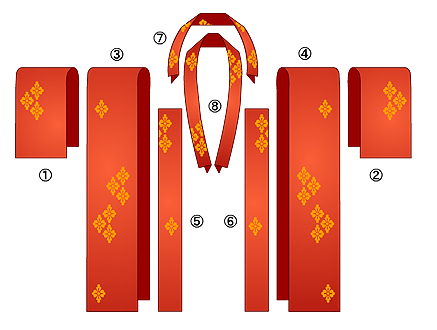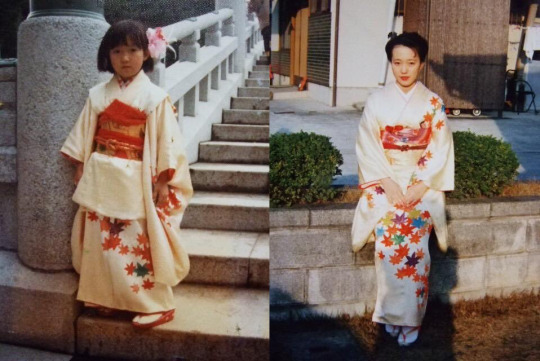#tokiarai
Note
Hello! I keep reading fiction with kimono hemmed to fit, and I keep thinking that can't be right. I can see it if their genes mean widening shoulders, but aren't kimono folded and tucked under the obi? Thank you for looking over this detail. (I'll stay anonymous because it's an honest mistake, and I don't want specific writers to feel cornered about it)
Hi! Np for this anon ask, I'll just stress here I most often reply via Tumblr messenger so don't hesitate to ask for private answer if you need it :)
On to your question: you are right, hemming (in the Western sense of the word) a kimono is not usually done in traditional Japanese tailoring.
One of the main reasons is that fabric bolts (tanmono) are a somehow standard unit, with patterning done with kimono tailoring in mind (so motifs match between panels etc).


Hemming a kimono means important parts of your kimono design will disappear! It is especially true for woman's kimono who often often display patterns on their lower skirt + sleeves.
When you wear a kimono with woman styling, the kimono is supposed to be more or less your total height to fit you size. The extra material is then tucked at the waist to form what is called the ohashori fold hold up by ties (himo). That fold gives you leeway as to which kimono you can wear as it is much more forgiving than Western clothes sizing. Being tall simply mean your ohashori will be small or non existent.
Men styling is a bit different as men don't do ohashori, which mean the kimono is tailored to their exact size (= give or take your height minus 30cm).
Kimono were usually passed to new wearers as time went, which means they are supposed to be worn by several body types. So, what about when a kimono is truly too big/small for the wearer?
Fabric was once (and still is) an expensive material so cutting it was a big no! Cutting also meant loosing the original tanmono panneling which was a terrible thing to do for any future alterations.
We so have two scenarios:
1) the wearer is a child: tucks are made at the shoulders (kata age) to reduce width, waist (koshi age) to reduce lenght, and sleeves (sode age). You can see in this past note a great example showing how a kid grew into a kimono:

2) The wearer is an adult: the kimono would have been totally unsewn, and then sewn back together, hiding the extra material into seams/letting the fabric needed for bigger wearer.
Taking a kimono apart is not especially unheard of, and it is actually the traditional way to clean it (tokiarai = unstitching a kimono and washing / araihari = stretching pieces of a kimono on boards to dry after they have been washed and starched). You can see it done here:
youtube
Becky from Silk and bones has many kimono specimen photographed if you want to actually see how they are made - and just how much fabric can be hidden away into seams + how disastrous and infuriating it is to have a kimono with butchered cut fabric :(
TL:DR : People don't "hem" their kimono to wear them, women for ex. tuck the extra fabric away and go in their merry way. If sewing is needed, "hemming" is not exactly what would be done in kimono tailoring.
A better way to describe it would probably be "adjusted" or "altered" to size :)
#ask#japan#fashion#fashion history#kitsuke#kimono tailoring#hemming#kimono size#sewing#shoulder tucks#waist tuck#sleeve tuck#sode age#kata age#koshi age#tanmono#fabric roll#ohashori#men kimono#washing kimono#tokiarai#araihari#kimono alteration#着物#帯
460 notes
·
View notes